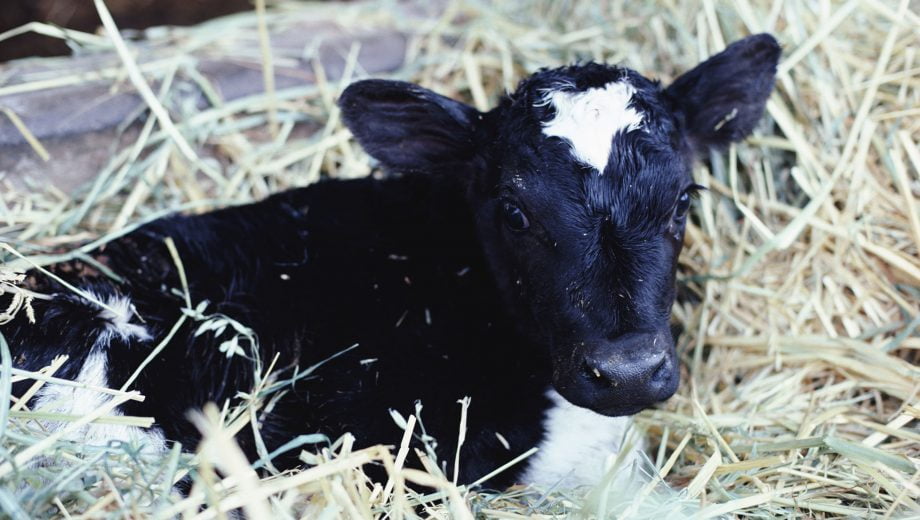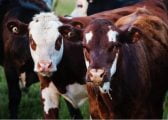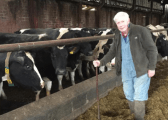Liquid Gold – Colostrum Management
Colostrum given to the newborn calf is the first vital step in optimum growth rates and disease prevention during the rearing phase. The importance of good quality colostrum given to the calf within the first 6 hours of life provides antibodies, hormones and energy. Colostrum intake has shown to have an influence on lifetime productivity.
Follow the QQQC method to ensure maximum benefit:
Q – Quality
Colostrum quality can be measured using a brix refractometer or a colostrometer. Both are easily accessible and relatively cheap.
The aim is to feed colostrum with levels of immunoglobulins over 50IgG/ml.
Management practices can greatly influence the quality of colostrum.
Causes of poor quality colostrum:
- Age of cow – Cows will provide better quality colostrum than heifers due to exposure to a greater number of pathogens, therefore a higher level of antibodies will be present
- Short dry period
- Assisted calving
- Poor transition diets
- Thin/fat cows
Q – Quickly
Getting colostrum into the calf within 6 hours of birth is recommended. Ideally, the sooner the better. When a calf is born, anitbodies provided by the colostrum are able to pass through the gut wall. As time passes, the ability for these large molecules to pass into the blood reduces as the gut wall becomes less permeable.
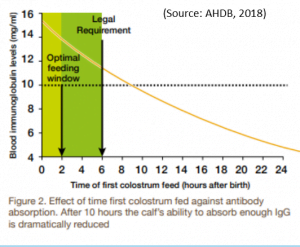
Having a source of colostrum to hand is useful either frozen or refrigerated.
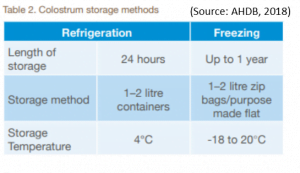
Fresh colostrum is not always available either due to Johnes protocol, calving difficulties (preventing milk harvest) or time of birth.
If warming the milk, avoid using a microwave as this destroys the antibodies present. Ideally use warm water (no more than 50oC) and feed at body temperature (38-39oC).
Q – Quantity
At least 2-3 litres of colostrum within 2 hours is recommended. The calf should receive a total of 10% of bodyweight within the first 6 hours of life.
C – Clean
- Johnes protocol – Avoid using colostrum from Johnes positive cows
- Batch dumping – Avoid mixing colostrum from various cows
- Clean harvest – Prevent contamination of bacteria from udders, dump buckets, clusters, people, and the parlour
- Store or feed – Bacteria in fresh colostrum quickly grows. Ensure it is either fed or stored within an hour of harvesting.
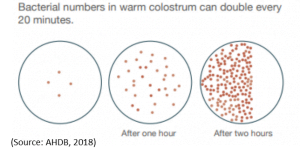 Useful links
Useful links
For more information on calf rearing some good sources of information can be found using the following links:
https://feedforgrowth.com/resources/
Further support can be provided by you rep or the technical team here at HJ Lea Oakes.



